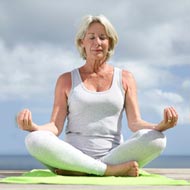- Aromatherapy (36)
- Benefits of Yoga (282)
- Home Remedies (1087)
- massage therapy (9)
- Preventive Therapy (135)
- Running (41)
- Skin Care (15)
- Stress Relief (25)
- Stretching (5)
- walking (33)
- Womens Health (14)
- Yoga Benefits for Pregnant Women (16)
- Yoga Benefits for Students (3)
- Yoga for Children (11)
- Yoga for Holistic Living (37)
- Yoga for Midlife Crisis (3)
- Yoga for Senior Citizens (2)
- Yoga for the Workplace (1)
- Yoga Health Tips (185)
- Yoga Practice during Menstruation (5)
Yoga Exercises For Deviated Nasal Septum

Can Yoga Help With Deviated Nasal Septum Condition
This is a very debatable question as there is a constant debate between purists of science and the believers of an ancient art form – Yoga. The purists feel that Deviated Nasal Septum is best treated with medication or surgery, whereas Yoga advocates believe in a mix of Yoga Pranayama (breathing techniques) and Ayurveda, another nature-made medication.
To understand the cure let us first understand the disease. Deviated Nasal Septum is a condition when the thin wall inside your nose separating the nostrils, gets displaced to one particular side. This creates blockage of the nose from one side and also interferes in breathing normally.. The person in this condition can face breathing problems and other complications like nosebleeds and sinus infections. Deviated Nasal Septum is caused primarily due to birth defects or permanent injuries to the nose.
Well the more popular school of thought says that surgery is a better option than Yoga because firstly it is quicker, has definitive results and is a 1-time option rather than suffering the everyday pain. Also this condition is more to do with anatomy of the nasal septum, which has been displaced from the center of the nose. Therefore, there is still the apprehension of using Yoga for treating this condition. However Yoga can be an excellent tool for minimizing the pain and side effects of this condition. Yoga with its complete range of Pranayamas (breathing techniques) can soothe the uneasiness caused to the patient.
You can use various Pranayamas (breathing techniques) to ease your condition. Start with a simple exercise. Lie down flat on your back in a relaxed position. Now stretch your legs in front of you and keep your eyes fixated at the roof or ceiling above you. Next, close your eyes and begin to focus on your breathing.
There are three types of breathing techniques that are simple and effective in this position. The first exercise deals with your abdomen. Try to take in deep breaths with your stomach muscles. When inhaling makes sure your abdomen rises with each breath of air. Count 5 seconds before exhaling slowly in a relaxed manner. Also make sure while exhaling that the abdominal muscles are being contracted as this is the key to this exercise. Repeat the same steps at least 20 times.
Now let’s focus on a chest breathing exercise. The important thing here in this exercise is that your focus should be on your chest and movement. Make sure you give your chest a real huff and puff thus expanding with each breath. Maintain a count of 5 seconds before exhaling slowly.
Concentration on the chest muscles is a must in this exercise. Do this exercise for another 20 times.
The third exercise is a combination of both, the abs and chest. It’s a little advanced so utmost concentration and discipline is required to practice this exercise. Start by breathing and using both your chest and abdomen muscles simultaneously. Now inhale taking a deep breath and expanding both the abdominal and chest regions with air. Count till 5 seconds and slowly exhale making sure that the air empties first from the chest and then gradually from the abdomen. This method has to be strictly practiced 20 times.
You can also try the fire breathing technique, which helps in building the airways for easier breathing. The technique comprises of rapid, short breaths done in quick succession. It’s simple, just sit in a relaxed position and take a deep breath through your nose. Now release 20 quick intervals of breaths through your mouth. During this exercise you should feel stomach contractions.
The debate will go on but one thing is for sure that Yoga has a solution to most of the problems in your body, if not all. It’s definitely an art, which has been proving science its effectiveness for centuries.
- RSS Feeds -
- All posts
- All comments
- Neti Pot Solution With increasing pollutants and effluents in the air around us, it has become ...
- How To Use A Neti Pot As you are exposed to increasing amounts of pollutants in your environment, y...
- Bhastrika Pranayama Technique Bhastrika (Bellows breath) comprises forced rapid deep breathing that serves ...
- Avoid Neti Pot Danger A neti pot is a great tool that can be used to clear out the sinuses. It look...